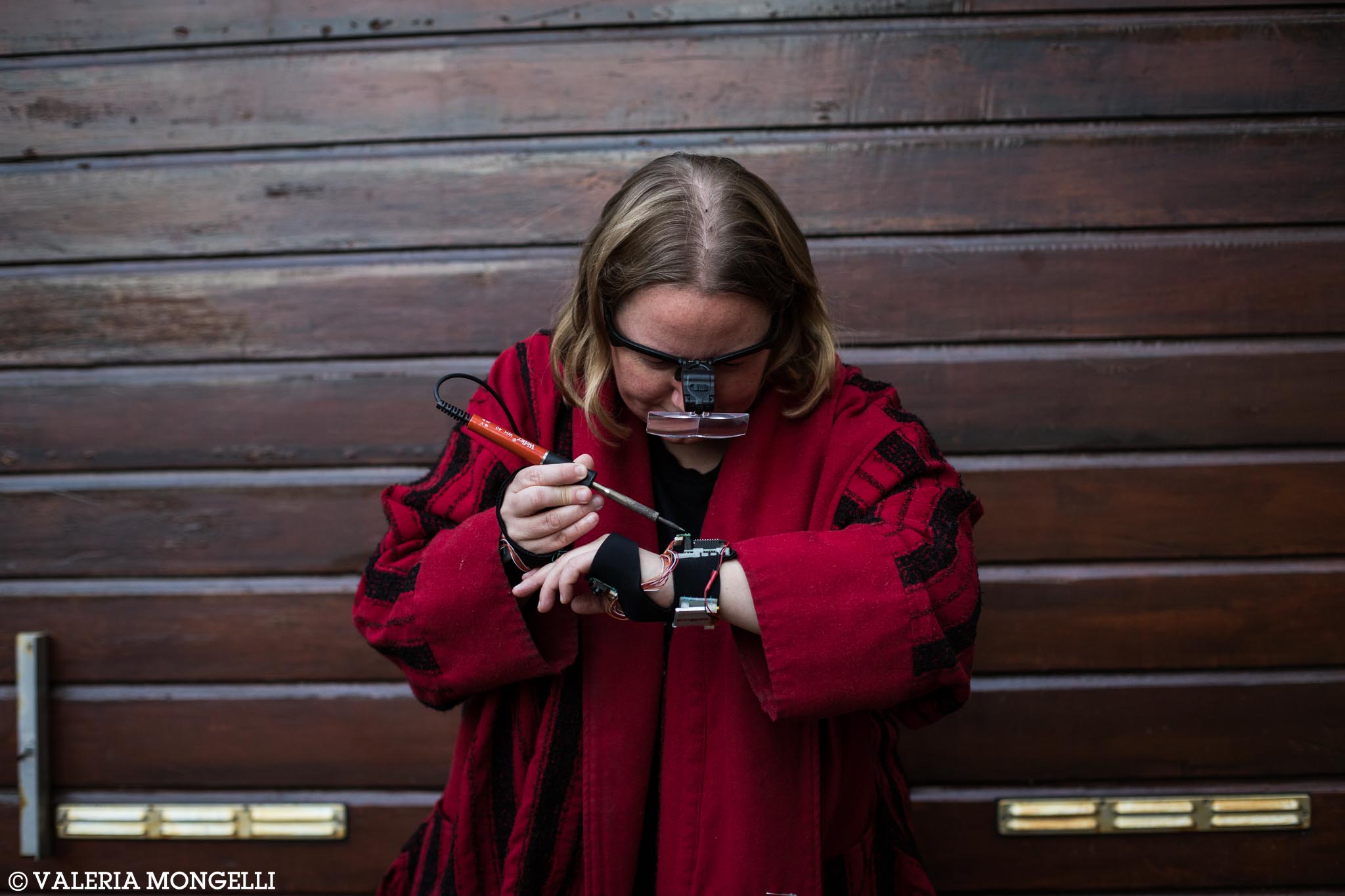Work session: Marije Baalman – «Mapping my Mapping»

When: 14th-16th of March
Application deadline: Registration is open.
Price: 1000 nok (500 nok for students)
Registration: Send an email to mads@notam.no
The goal of the 3 day meeting is for artists to work on documenting their own instrument, performance, installation and/or other interactive project.
This process is guided by Marije Baalman. Participants are invited to share their documentation and describe their process during the work session. That way the participants can build feedback and dialogue techniques that will access more in-depth insights of their work and that of others.
The work session is developed in parallel with the writing of the book “Just a question of mapping – ins and outs of composing with realtime data” by Marije Baalman.
Target audience
The target audience for the work session is experienced artists and designers who would like to reflect on their own practice and learn from other’s practice.
Particpants are asked to have a project that uses interactive technologies. For example:
• an augmented acoustic instrument with sensors
• a digital instrument, controlled with MIDI controllers, self-built interfaces and/or game controllers.
• an interactive installation, that uses sensors for interaction with the public
• an interactive dance setting where one or more dancers wear or are tracked by sensors, that control sound, light and/or visuals
Time schedule
Each day we will work from 11:00 until 18:00 with a lunch break in the middle. The session will take place at NOTAM.
Day 1 – morning: Introduction & setup
- Participant and coach introductions.
- Introduction of each participant’s project.
- Introduction of Mapping my Mapping methods.
- Discussion of aims and concepts.
- Setting up instruments/installations to demonstrate.
Day 1 – afternoon: Ins and Outs & Physical description
- Gesture and output – what happens?
- Playing the instrument/installation in gestures and words.
- How are the different physical elements connected, including cables, communication protocols, etc.
- How are the elements used?
Day 2: Computational process
- Tracing data/signal from input to output.
- What does the output that is controlled/steered/influenced by the data do?
Day 3 – morning: Writing documentation
- Clarify and structure the descriptions from previous days.
- Review, analyze and discuss the documentation.
Day 3 – afternoon: Discussion
- Discuss all participant’s projects with Q&A
- Review and discussion of practical and aesthetic issues that have arisen during the 3 days.
Participation
To participate, please send the following information to mads@notam.no before 14th of February 25th of February 2020. Baalman will then make a selection of projects, aiming to have a good diversity of projects and artists.
• Name
• Website
• Motivation for participating
• Which project you would like to document and analyze during the meeting?
Please share a brief description and links to any documentation you already have of your instrument, e.g. a video online.
About Marije Baalman
Marije Baalman has built new musical interfaces since 2002 and has been creating various projects involving realtime data in the contexts of music, dance and installations. In addition she has been developing the Sense/Stage wireless sensing platform since 2007, which is available through a webshop. She has held numerous workshops involving realtime sensing and mapping data from sensors to sound. Between 2011 and 2016 she worked at STEIM developing hardware, firmware and software for artists. She was also involved in the Modality project, a toolkit for SuperCollider to access HID, MIDI and OSC controllers, the SuperCollider port to the Bela, an embedded platform for creating musical interfaces. She has written several articles about her artistic practice and research over the past years and contributed to three chapters in ‘The SuperCollider Book’ published by MIT Press in 2011.